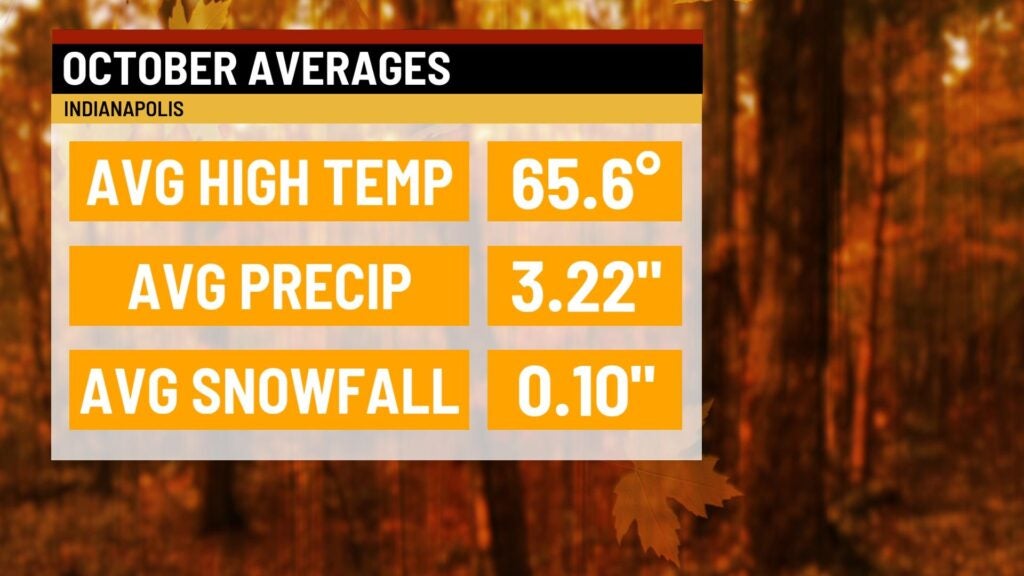Meteorological fall: averages and its history
INDIANAPOLIS (WISH) — The fall season is beloved by many who are ready to unwind from the summer heat and enjoy the changes of scenery around them.
Astronomical fall begins Thursday while meteorological fall started on Sept. 1. Meteorological fall will be the focus in this story with breaking down averages and some noteworthy events.
Meteorological fall is defined by the timeline from Sept. 1-Nov. 30. As we make our way throughout fall, we gradually become cooler on average. However, there is a slight increase with the average amount of rain and snow we receive in the timeframe of meteorological fall. When you average out everything across the board, the meteorological fall season has an average temperature of 55.6 degrees, an average precipitation of 9.81 inches, and even 0.9 of an inch of snow.

In our Sept.9 web weather story, September’s averages we’re discussed in which it is a mild to warm month with just over 3 inches of rain on average. October and November make steep drop-offs in the average temperature department, and this is why, as a whole, the fall season showcases a rather cool average temperature.


Now, let’s talk about the historical stats of fall. It is important to start with the fact that the past five falls have more or less featured warmer-than-normal conditions at times, which is not considered usual. Despite this trend, none of the last five falls are in the top 10 warmest category.
How about relatively cold falls? The last time we saw a top 5 cold fall was back in 1976, which ultimately marks the coldest overall for the season.
Lack of rainfall has also been a story at times with months such as September 2017, September 2019, and September 2020 being extremely dry. For our wettest fall on record, you have to go all the way back to 1871. The driest fall on record occurred in 1963.



Fall can also showcase erratic weather. Let’s touch on a couple of notable severe weather events that have occurred in this season first. There are several that can be named off, but some of the ones that instantly come to mind are the Oct. 26, 2010, damaging wind event and the Nov. 22, 1992, tornado outbreak. There will be web weather stories in the near future covering some of these events in further detail.
Winter weather can even make its presence felt early; as for instance, Oct. 19, 1989, featured Indy’s biggest snow event in the month’s history with 9.3 inches of snow recorded. Nov. 14-15, 2018, saw an unusual ice event in central Indiana. Some areas wound up receiving up to from 0.25-0.3 of an inch of ice.
Let’s quickly go back to the discussion of fall heat to close things out. October for example has even seen some 90-degree days. Indianapolis had recently set its all-time high temperature record for the month on Oct. 1-2, 2019. The latest date into the year that Indy saw a 90-degree day was Oct. 8, 2007, with a high of 91.



